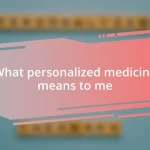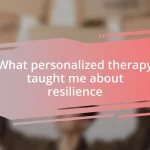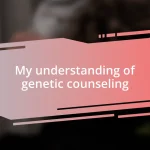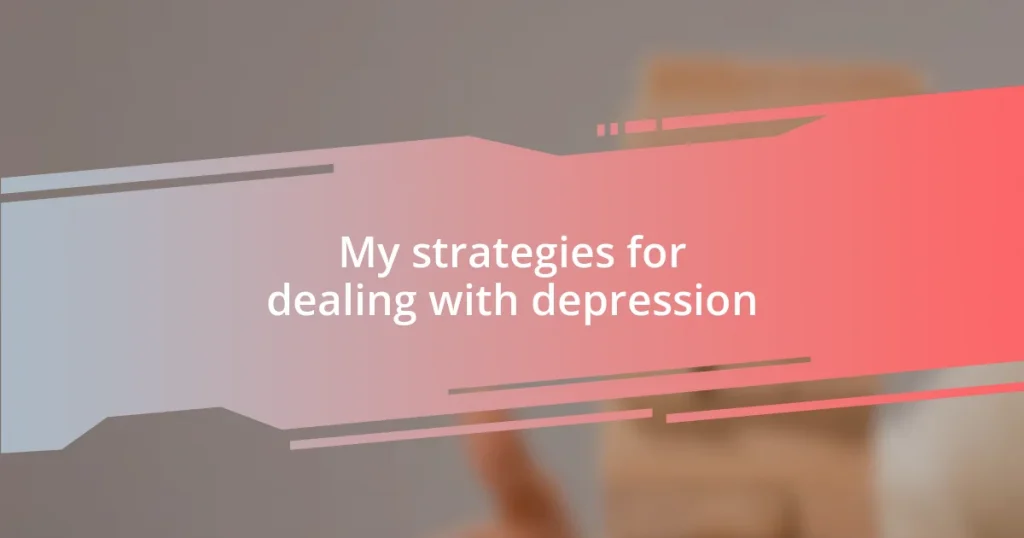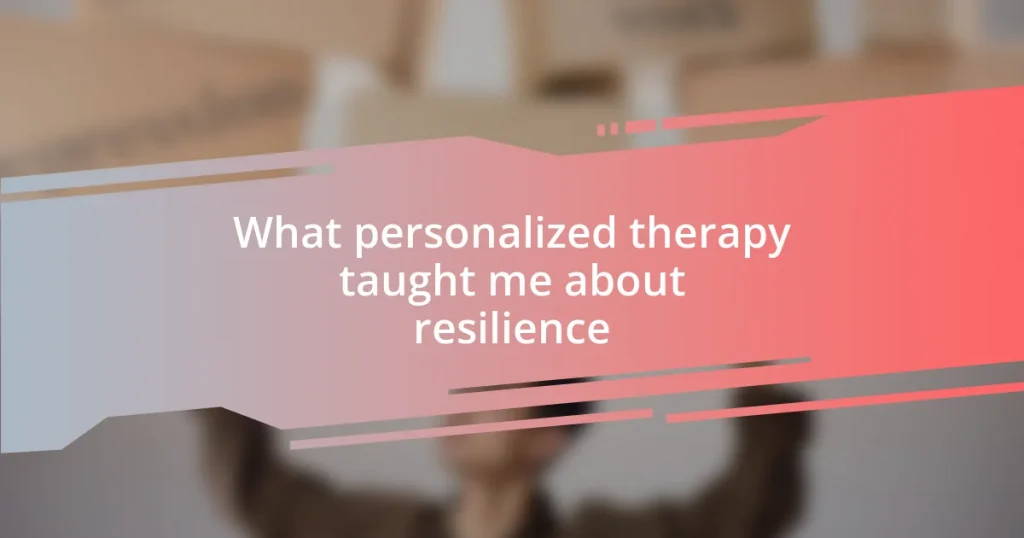Key takeaways:
- Recognizing symptoms of depression, such as persistent sadness, fatigue, and appetite changes, is crucial for understanding one’s mental health.
- Establishing a structured daily routine and incorporating physical activity can significantly enhance mood and provide a sense of control.
- Utilizing support systems, including friends, support groups, and professional therapy, is essential for managing depression effectively.
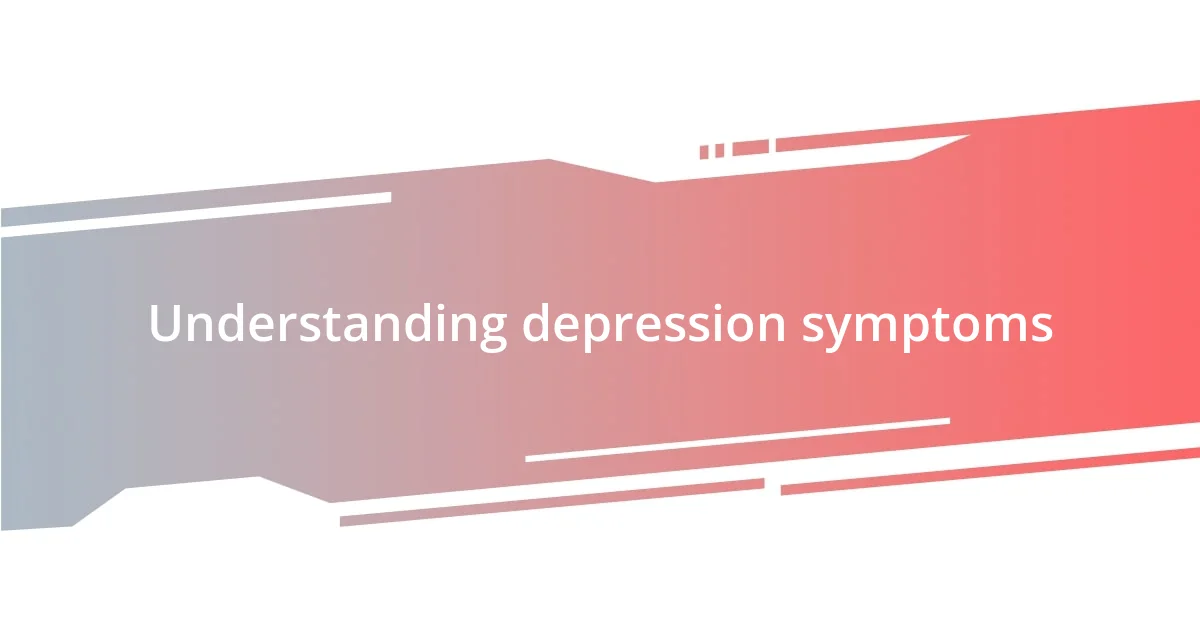
Understanding depression symptoms
Depression can manifest in various ways, often leading to confusion about what one is truly experiencing. For instance, I remember a time when I felt an overwhelming fatigue, where even getting out of bed felt monumental. I often wondered why simple tasks became so daunting—something as routine as getting dressed could feel like climbing a mountain.
One hallmark symptom is the persistent sense of sadness or emptiness. Have you ever found yourself laughing at something that you used to find hilarious, yet felt a weight sitting in your chest? That dissonance—where joy and heaviness coexist—can be disorienting and is a poignant indicator that something deeper may be at play.
Another common symptom is a change in appetite, which I found particularly telling during my own struggle. I experienced days when I couldn’t stand the thought of food, while on other days, I would drown my feelings in unhealthy snacks. It’s fascinating how our bodies react, and recognizing these patterns can help in acknowledging that we might be dealing with depression rather than just stress from daily life.

Establishing a daily routine
Establishing a daily routine can be a powerful tool in managing depression. I’ve experienced firsthand how structure can provide a sense of control when everything else feels chaotic. When I started mapping out my days, I noticed a significant shift in how I approached challenges. Having a set rhythm gave me purpose, making tasks like morning coffee or evening walks feel like small victories.
Here are some effective strategies to consider when creating your routine:
- Wake up and go to bed at the same time every day: This simple habit can help regulate your body clock and improve sleep quality.
- Include regular meals: I found that scheduling meal times not only nourishes my body but also anchors my day.
- Incorporate exercise—even light activity: Whether it’s a short walk or stretching, moving my body releases those feel-good endorphins.
- Set aside time for hobbies: Dedicating moments to things I enjoy, like reading or drawing, has been a great way to boost my mood.
- Plan social interactions: Even brief chats with friends or family can remind me that I’m not alone in this journey.
These elements of a daily routine have helped me regain a sense of normalcy, making a significant difference in how I navigate my feelings and emotions.

Incorporating physical activity
Incorporating physical activity into my daily life has truly been a game-changer. There were days when I felt too drained to even consider exercise, but I soon realized that even the smallest movements could lift my spirits. I remember starting with just a five-minute walk around my block. Initially, it felt like an uphill battle, but gradually, I found that being outside and breathing fresh air sparked a sense of vitality within me.
Engaging in physical activity, whether it’s a brisk walk or a more intense workout, triggers the release of endorphins—often called the “feel-good” hormones. I can’t tell you how many times I’ve finished a workout only to feel a rush of optimism that wasn’t there before. This uplift in mood often encourages me to tackle other aspects of my day. It’s ironic, isn’t it? The very thing I resisted became a source of strength and motivation.
I’ve also discovered that exercising in a group can create an uplifting community vibe. One day, I decided to join a local yoga class. The shared experience of stretching and breathing as a collective was not only refreshing but also made me feel less isolated. I could sense that others were fighting their battles too, and that connection was invaluable. Sharing those moments with others reinforced the idea that we can combat depression together, making each step forward resonate even more
| Activity | Benefits |
|---|---|
| Brisk Walking | Improves mood and boosts energy levels. |
| Yoga | Promotes relaxation and reduces stress. |
| Group Fitness Classes | Creates a sense of community and support. |
| Stretching | Enhances physical flexibility and mental clarity. |
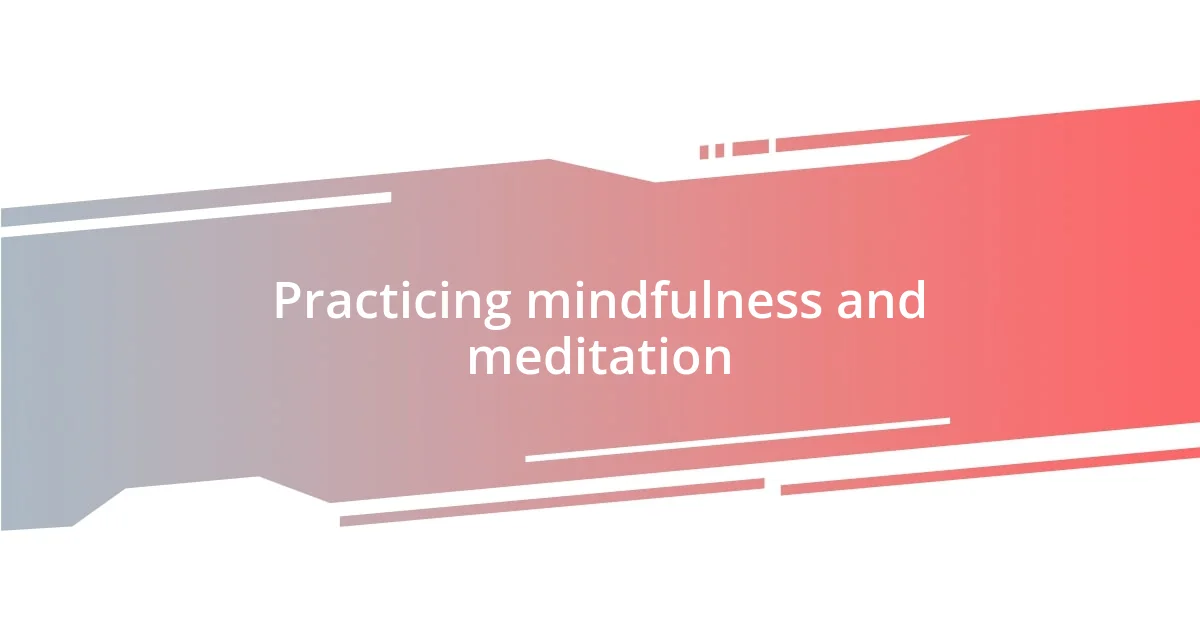
Practicing mindfulness and meditation
Mindfulness and meditation have become essential practices in my daily life. I started exploring these techniques during a particularly tough phase, and I was amazed at the difference they made. Just taking a few moments each day to focus on my breath, I felt a wave of calm wash over me, as if I was gently lifting the fog of despair that often clouded my mind.
I remember one evening, sitting cross-legged on my floor, surrounded by soft light and calming scents. As I closed my eyes and concentrated on my breathing, thoughts raced through my mind, but I held onto the practice of simply acknowledging them without judgment. That experience felt liberating; it was like giving myself permission to just be, even when everything felt overwhelming. Have you ever taken a moment to just breathe and let everything else fade away? It’s remarkable what a few minutes of mindfulness can do for emotional clarity.
Integrating guided meditations into my routine also brought unexpected revelations. Some nights, I’d find myself listening to soothing voices leading me through visualizations. I vividly recall one session where I imagined myself walking through a peaceful forest. That imagery stirred something deep within me, highlighting the importance of nurturing inner peace. It’s incredible how such practices can help us reconnect with ourselves. I truly believe that mindfulness and meditation have a healing power; they remind me that amidst the chaos, I can always find a moment of stillness.

Utilizing support systems effectively
Utilizing my support system has been a crucial part of managing my depression. I remember one particularly low point when reaching out to a close friend felt like an insurmountable task. I decided to send a simple text, “Can we talk?” That small step led to a long conversation where I felt heard and understood. It’s amazing how just sharing my thoughts lightened my emotional load, reinforcing the importance of opening up to those close to us.
I also learned that not all support comes from friends or family; support groups can offer unique perspectives. I joined one after attending a session out of pure curiosity. Honestly, I was nervous about sharing my experiences, but hearing others speak about their struggles felt eerily familiar. Have you ever felt that sense of belonging among strangers? I did. It became a reminder that I wasn’t alone in this journey, and the collective wisdom in the room helped bring clarity to my own challenges.
It’s equally vital to know when to lean on professionals. There were moments when friends couldn’t offer the insights I needed, and that’s where therapy came in. I vividly recall my first session, sitting in a cozy chair, hesitating to speak. But once I started to unpack my feelings, it felt like a weight had been lifted. The therapist’s guidance provided me with tools and strategies that I still use today. Seeking professional help can be a transformative experience, and it’s essential to embrace that avenue of support when needed.

Exploring professional therapy options
Exploring professional therapy options has been a vital part of my journey. I remember feeling apprehensive before my first appointment, uncertain about what to expect. But as I settled into that quiet office, I quickly realized this was a safe space, free of judgment. Don’t you think it’s powerful to have a dedicated moment where you can untangle your thoughts with someone who is trained to listen?
During my time in therapy, I discovered various approaches that resonated with me. For instance, cognitive-behavioral therapy (CBT) opened my eyes to the connection between my thoughts, feelings, and actions. I recall a particularly eye-opening session where my therapist helped me challenge a negative belief I had about myself. It felt like breaking through a barrier that had been holding me back for years. The realization that I could change my inner dialogue was liberating. It’s fascinating how professional guidance can lead to such profound shifts in perspective, isn’t it?
Another option I explored was group therapy. At first, the idea of sharing my struggles in a room full of strangers was daunting. Yet, I soon found that listening to others’ stories mirrored many of my own experiences. There was this unexpected warmth in knowing we were all navigating similar paths. The encouragement I received from the group was uplifting, almost like receiving a collective hug. Do you believe that shared experiences can foster healing? For me, it absolutely did. Therapy, in its many forms, is more than just a resource; it’s an opportunity to grow and heal alongside others.
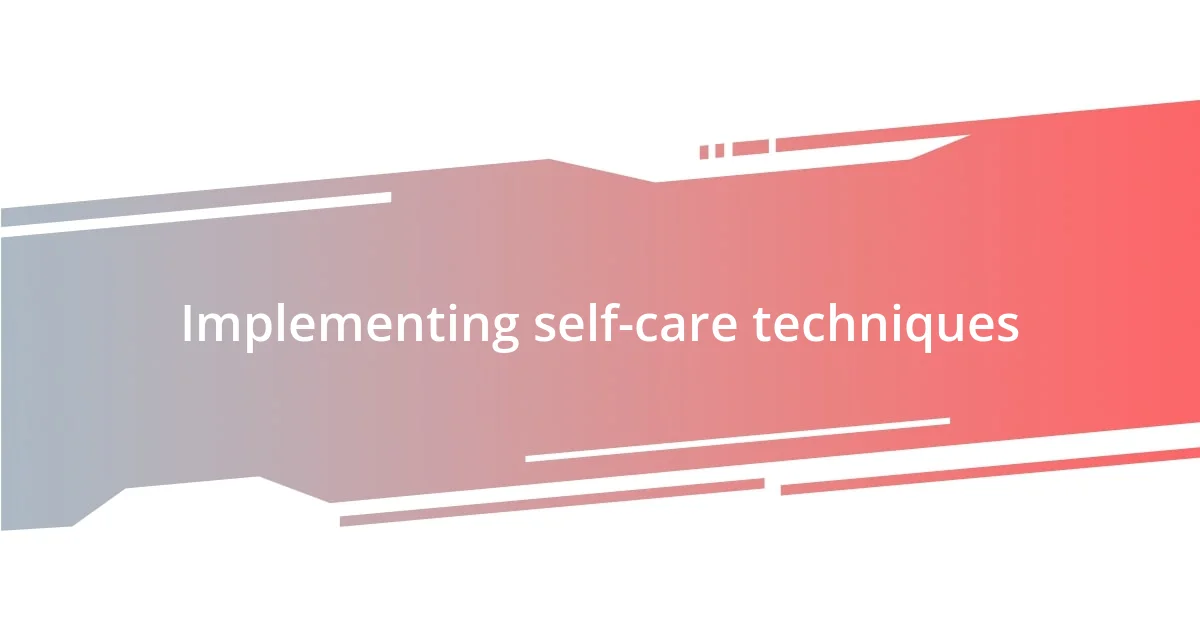
Implementing self-care techniques
Implementing self-care techniques has become a fundamental aspect of managing my depression. One strategy that I’ve incorporated is establishing a consistent routine. Initially, I resisted this structure, thinking it might feel stifling. However, I found that having a predictable schedule greatly reduced my anxiety. Have you ever noticed how a little order can bring calm amidst chaos? For me, simple things like regular meal times and bedtime rituals have made a significant difference.
Another technique I swear by is the power of movement. I was once skeptical about exercise as a form of self-care, often viewing it as an obligation rather than a release. But I remember the first day I decided to go for a brisk walk, feeling the fresh air fill my lungs—it was invigorating! That day, I not only lifted my mood but also discovered a sense of connection to my surroundings. The rhythm of my steps helped clear my mind, and it reminded me that sometimes, just being outside can ignite a spark of joy. Have you felt that rush of positivity when being active?
Mindfulness practices have also played a significant role in my self-care toolkit. Although I initially struggled with the idea of meditation—it seemed daunting and out of reach—I gave it a shot one rainy afternoon. Following a guided session, I began to appreciate the stillness and clarity it brought. It was during that session that I realized how often I was caught up in spiraling thoughts about the past or future. I learned to gently bring my attention back to my breath, creating a peaceful retreat within. Doesn’t it feel liberating to take a step back and find that inner calm? Embracing self-care has been a journey, but it’s an empowering way to reclaim my well-being.

